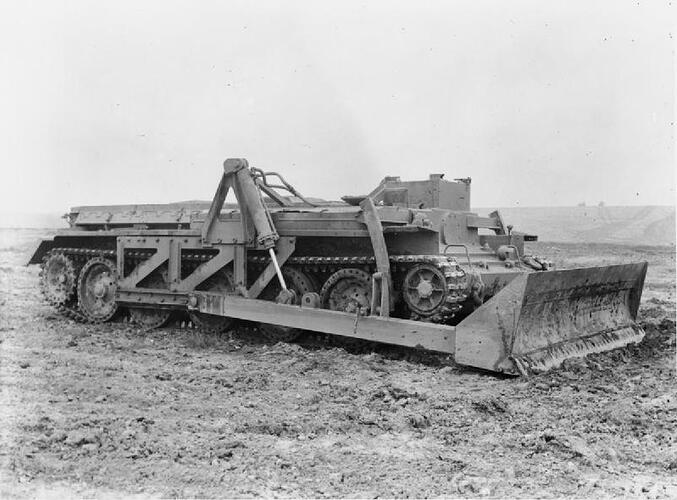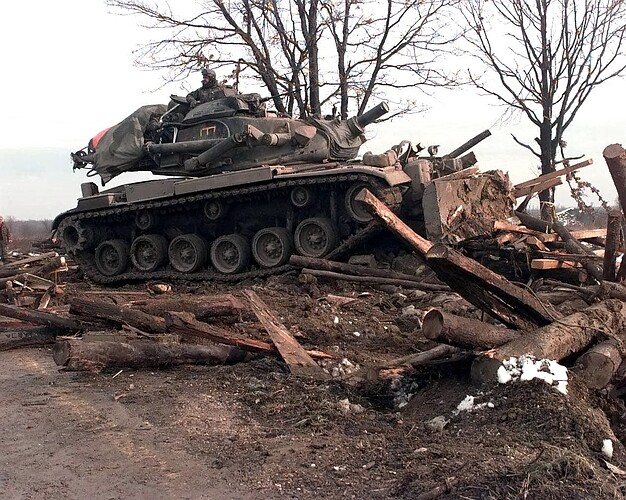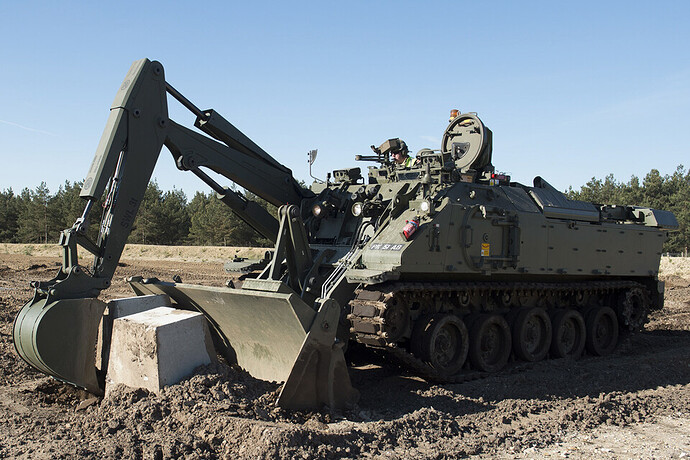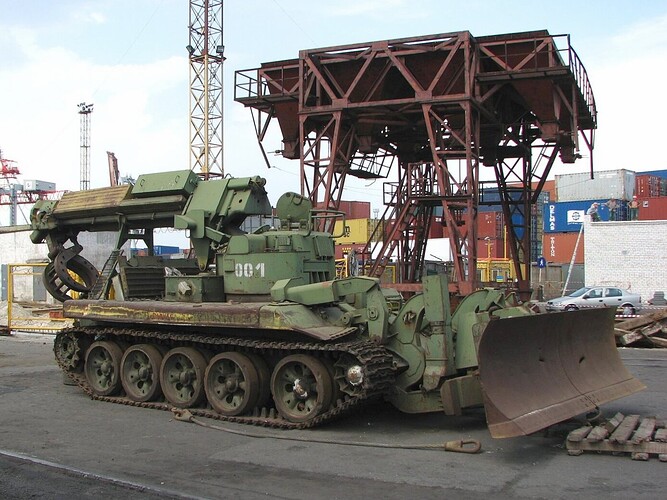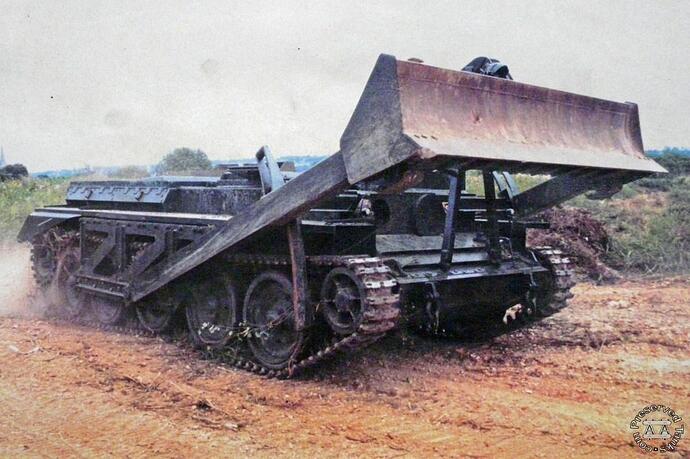The Hobart’s Funnies were modified versions of tanks used by the British 79th Armored Division and also by specialists from the Royal Engineers. It was clear to the Allied planners that for Operation Overlord to be successful, speed in overcoming obstacles and coastal fortifications would be of utmost importance. After the failed Dieppe Raid, the British had learned that the first wave of assault troops would need the support of armored vehicles to eliminate bunkers and provide covering fire while the infantry overcame the defensive obstacles erected by the Nazis. Responsibility for the design of these new armored vehicles and the training to go with them was given to Major General Percy Hobart. Many of the ideas had already been tried, tested or were in experimental development both by Britain and other nations. For example, the Scorpion flail tank (a modified Matilda tank) had already been used during the North African campaign to clear paths through German minefields. Soviet T-34 tanks had been modified with mine-rollers. Close-support tanks, bridgelayers, and fascine carriers had been developed elsewhere also. The first example I’m going to illustrate is the Sherman Duplex Drive DD. This was a conversion of the M4 Sherman tank into an amphibious tank. Buoyancy was provided by a collapsible canvas skirt while the forward thrust was provided by two propellers connected to the engine. Unfortunately, rough seas on June 6 caused many of the converted tanks to fill with water and sink with the loss of their crews. Additionally, the Sherman DD’s were the only example of Hobart’s Funnies to be used by the U.S. forces.
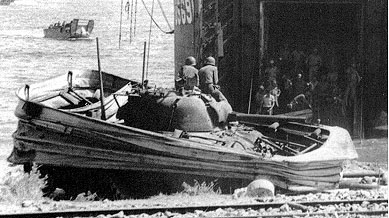
The AVRE Bobbin
The purpose of this device mounted on a Churchill chassis was to lay a canvas strip 10 ft. wide over the beach in order to prevent heavy vehicles from sinking into the sand.
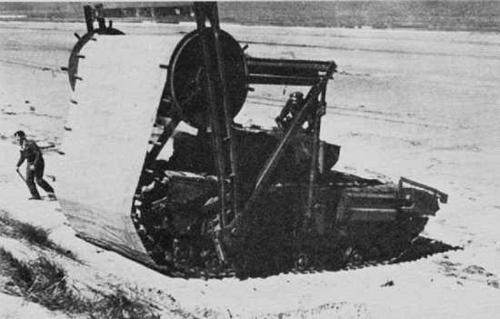
The Sherman Crab
This tank was equipped with a mine flail, a rotating cylinder to which weighted chains were attached that thrashed the ground in order to discharge any unexploded landmines.
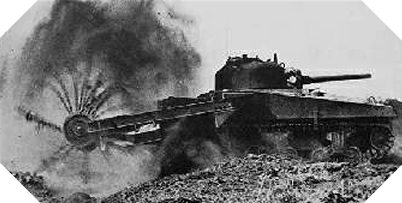
The AVRE Bridgelayer
This converted tank carried a section of bridge 30 ft. long with a load bearing capacity of 66 tons that could be laid down hydraulically.
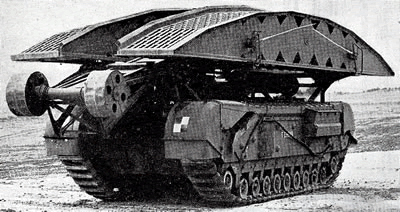
Mark IV Churchill Crocodile
They equipped a flamethrower onto this heavy tank, so it was a flamethrower death machine! (one of my favorites of Hobart’s funnies)
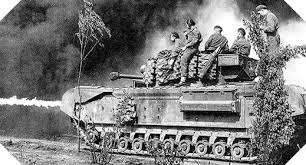
Percy Hobart was a veteran, first-generation tank pioneer - which is why he was given the “funnies” job. There is an American story relating to the “funnies” that comes to mind. At the Moscow victory celebrations, General Eisenhower was making conversation (?via interpreter) with Marshal Zhukov. He mentioned his appreciation of particular mechanical aids to mine clearance - notably the Sherman “Crab” and other flail devices, saying that they had accelerated the advance of Western Allied troops and saved many lives. Zhukov, apparently, thought for a few seconds, and then replied, “When we met a minefield, we would just cross it without hesitation or delay. This saved even more time.”. Of course, Zhukov had punishment battalions and NKVD “herdsmen” at his disposal … Yours from the Minefield Gap, JR.
The Churchill AVRE fascine carrier
One of the problems that needed to be overcome by Hobart and his department MD1 ( also known as Churchill’s toyshop ), was the fact that once on land, the vehicles would encounter trenches, ditches and tank traps with which they would need to deal in order for the Allies to advance. This problem was addressed by the creation of a multipurpose armoured vehicle, the Churchill AVRE (Armoured Vehicle Royal Engineers), which could be equipped with a fascine carrier.
One of the unanticipated uses of the fascine carrier was to fill in the large craters created by Allied battleship guns and heavy bombers. Some of these projectiles and bombs were a thousand pounds each, containing high explosives which created immense craters that could swallow as many as two or three tanks.
Fascines were a group of sticks (brushwood), which were wired together into large bundles. Approximately 6 feet to 8 feet in diameter and approximately 11 feet wide, metal pipes could be placed in the center of a bundle to act a as a culvert. A special rack (cradle) was used to carry the fascine on the hull deck of an AVRE, in front of the turret. Secured in place by hawsers, the fascine could be released into a ditch or other void, to fill the space. Additional fascines could be towed by the AVRE on a trailer.
Unfortunately, the fascine obscured the driver’s view, making it necessary for a crewman to be outside the AVRE to pass on driving directions. It also created problems if it were necessary to fire the AVRE’s Petard spigot mortar. Despite these problems, the AVRE fascine carrier was quite successful in filling German tank traps and other voids, allowing it and the remaining Allied vehicles to cross over and advance. Once free of the fascine and rack, however, the AVRE could carry on as a conventional armored vehicle.
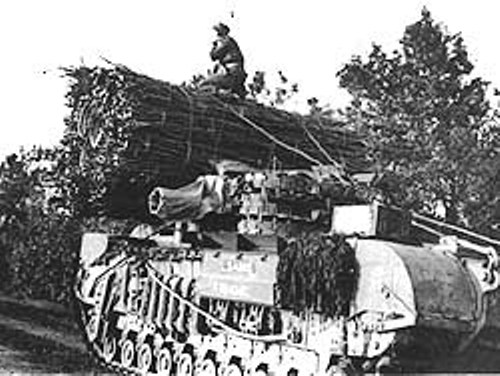
To read more, see:worldwar2headquarters.com
Touched a subject dear to my heart being a Sapper
79th Armd Div was the holding unit for all the British ‘Funnies’ whether operated by RAC or RE crews after 1942
The British had already developed mine ploughs and rollers (a few of which were deployed to france in 1940).
The US had a single Churchill Crocodile and several conversion kits for 4 Sherman Crocodiles which they used after the failure of their own Sherman equipment at the time.
The first DD Tanks were Valentines they were actually used in combat in Italy during river crossings.
The Bobbin device came in several different versions and laid several different types of mat, the first ones designs on a Churchill were deployed at Dieppe.
The first Churchill Bridgelayer was an adaptation of the standard AVRE with hull fitments for the SBG (small box girder bridge) to be mounted on the front. Covenanter and Valentine Bridgelayers also saw active service in WW2 with straight and scissor type bridges.
Alongside the Bridgelayers can be classed the ARC’s (Armoured Ramp Carriers) which were basically gun tanks with turrets removed (several different versions with more or less modification, also M4 Shermans were adapted for the role).
The image you have is a Churchill Crocodile which were conversions of Churchill Mk VII’s, the earlier Churchill flame tanks were the Oke Mk 1 (used at Dieppe) based on Churchill Mk II. The US also operated a single Churchill Crocodile and four Sherman Crocodiles after the relative failure of their own E 4-5 system for the Shermans.
The Original design for the AVRE fascine hamper restricted the view of the driver meaning the commander had to sit on the turret roof - experiments were made with an extended periscope for the commander to allow him to guide the tank while closed up. Ultimately it failed and the hamper was redesigned allowing the driver a much better view. Pictures of the equipment invariably show it out of combat areas where it was easier and safer in the busy narrow roads and lanes to have the commander out of the turret to increase the view to the sides especially.
Leccy
You were a sapper? That’s very interesting ( and pretty cool too  ). Thanks for the info, especially the Amazon Bridge. It sounds like those men had a tough job! Kind of like during the American Civil War at the Battle of Fredericksburg where the Union Army was trying to construct a pontoon bridge across the Rappahanock River while under fire from Confederate sharpshooters positioned inside homes and stores on the other side. They inflicted so many casualties that General Burnside decided to dislodge them using artillery, for which he received some criticism for damaging civilian property.
). Thanks for the info, especially the Amazon Bridge. It sounds like those men had a tough job! Kind of like during the American Civil War at the Battle of Fredericksburg where the Union Army was trying to construct a pontoon bridge across the Rappahanock River while under fire from Confederate sharpshooters positioned inside homes and stores on the other side. They inflicted so many casualties that General Burnside decided to dislodge them using artillery, for which he received some criticism for damaging civilian property.
The Centaur Bulldozer was a Cromwell tank with the turret removed and fitted with a simple winch-operated bulldozer blade. These were produced because of a need for a well-armoured obstacle-clearing vehicle that, unlike a conventional bulldozer, would be fast enough to keep up with tank formations. They were not used on D-Day but were issued to the 79th Armoured Division in Belgium during the latter part of 1944.
The Canal Defence Light (CDL) was a British “secret weapon” of the Second World War.
It was based upon the use of a powerful carbon-arc searchlight mounted on a tank. It was intended to be used during night-time attacks, when the light would allow enemy positions to be targeted. A secondary use of the light would be to dazzle and disorient enemy troops, making it harder for them to return fire accurately. The name Canal Defence Light was used to conceal the device’s true purpose.
I’m surprised they didn’t leave the turret on and give the dozer some teeth…
It is quizzical, I (personally) think that the funnies were the beginning of well conceived, and dedicated CEV’s most every military uses nowdays. Though the specialized machines are still represented, Bridge carriers, retrieval vehicles, and combat Dozers/ excavators, and mine removal. the general CEV has settled somewhat in its design features, all of which in one form or other, were used in the funnies. Uses a Tank hull, perhaps one that has been modified, carries a dozer blade, an obstacle clearing Demolition gun, and some sort of winch or Boom arrangement. May, or may not have a Turret, or superstructure. A few images, U.S. U.K., and German. And one made from a T-54 Chassis.
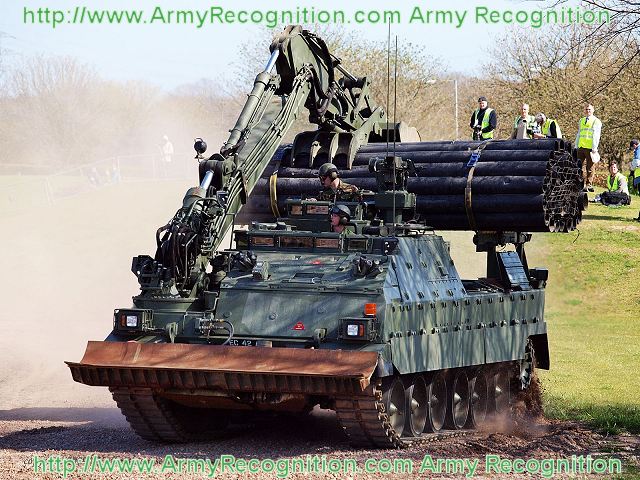
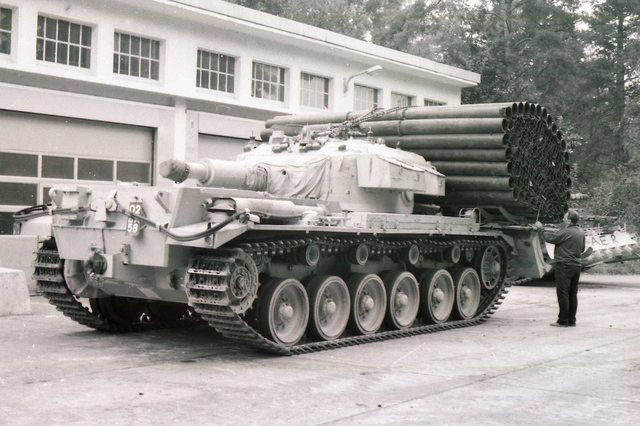
The Centaur dozer was a Centaur A27(L) tank not a Cromwell A27(M),
Centaurs (Originally called Cromwell II, Cavalier being Cromwell I and Cromwell called Cromwell III) had Leyland built Liberty engines (Cromwells had Rolls Royce Meteor’s), which were less reliable and underpowered for the newer cruisers.
Add a dozer blade to the already strained engine decreased reliability especially if keeping the turret - remove the turret reduces the weight so reduces the strain.
The Centaur dozer came in two variants the first was winch operated (which was another reason the turret was removed as the winch was fitted to the rear of the vehicle with the rope leading to the front) and the other (your picture) shows the late war/post war Hydraulic version which was possibly a Cromwell by them)
Centaur dozer with winch operated blade


